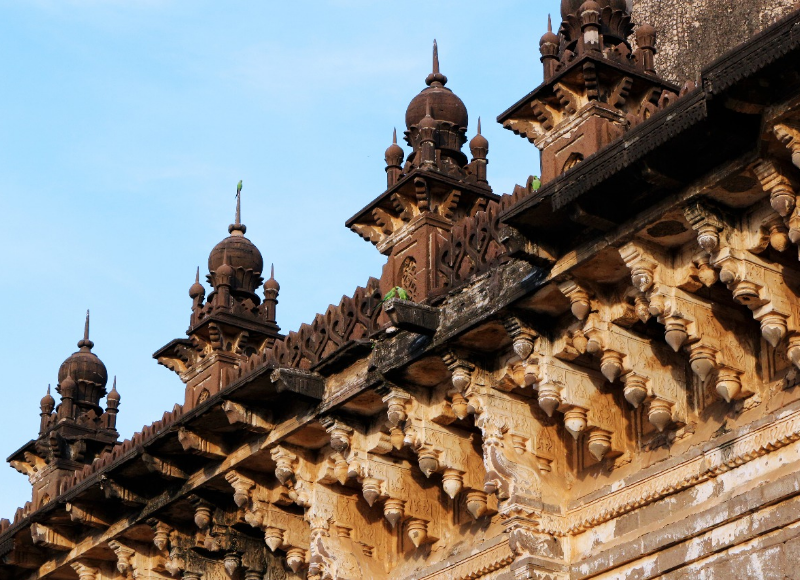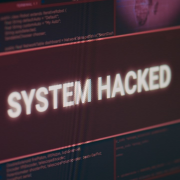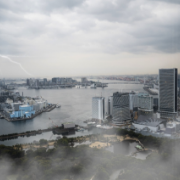Introduction
Cultural heritage — encompassing monuments, landscapes, artifacts, and traditions — serves as the collective memory of civilizations, acting as a wellspring of identity, inspiration, and economic value for nations. From the sacred temples of Khajuraho to the bustling alleyways of Old Delhi, India’s UNESCO-listed sites are living embodiments of historical continuity. Yet, these irreplaceable assets are subject to escalating risks from environmental threats, conflict, urbanization, and neglect, endangering their physical survival and intangible value. Traditionally, preservation efforts have been reactive, focusing on restoration after damage has occurred. However, a forward-looking approach demands a fundamental shift: from restoration to prevention.
This blog highlights the indispensable role of a risk-intelligent framework in the preservation of cultural heritage. Drawing on principles of enterprise risk management (ERM), this framework provides a systematic, proactive methodology for identifying, assessing, and mitigating the diverse risks to heritage assets.
Risks to Cultural Heritage
Cultural heritage sites are subject to a broad array of risks, both natural and human-induced. Good cultural heritage management would involve understanding these risks in order to develop an effective preservation strategy. These risks can be categorized into several key types:
- Environmental Risks – Climate change is arguably one of the most significant threats to cultural heritage today. Rising temperatures, changing precipitation patterns, and the increasing frequency of extreme weather events, such as floods, droughts, and storms, put monuments and heritage sites at risk of deterioration. For instance, the intricate carvings on the temples of Khajuraho in India face the threat of erosion due to fluctuating weather conditions. Furthermore, flooding and humidity can exacerbate the decay of materials such as wood and stone, as seen in several heritage sites around the world.
- Natural Disasters – Earthquakes, tsunamis, landslides, and other geological events are direct threats to heritage sites. The devastation caused by natural disasters is often sudden, leading to significant loss of historical monuments, artifacts, and entire heritage sites. In India, many UNESCO World Heritage Sites are located in seismic zones, making them vulnerable to seismic activity.
- Human-Induced Risks – Human activities, including urbanization, tourism, construction, and even war, can cause significant damage to cultural heritage sites. Vandalism, looting, and illegal excavations have also contributed to the destruction or theft of invaluable artifacts. The over-commercialization of cultural heritage for tourism, if not managed responsibly, can lead to irreversible damage. For example, the high foot traffic at popular heritage sites can cause wear and tear on delicate surfaces and structures, as seen in the case of the Ajanta and Ellora caves in Maharashtra.
- Biological Risks – Biological agents such as fungi, bacteria, and insects can contribute to the deterioration of organic materials such as wood, textiles, and manuscripts. Insects, like termites, can destroy the structural integrity of wooden artifacts, while fungi and mold can damage the surfaces of sculptures and paintings. Biological threats are often exacerbated by climate change, as warmer and more humid conditions create an ideal environment for the growth of these agents.
- Geopolitical Risks – Political instability, civil unrest, and conflicts often lead to the destruction of cultural heritage. War zones, such as the conflicts in Syria and Afghanistan, have seen deliberate targeting of heritage sites by military forces or extremist groups. In India, the political environment sometimes affects heritage preservation efforts, with funding and support fluctuating based on regional or national priorities.
- Economic Risks – Preservation is a costly endeavor. A lack of consistent governmental or private funding leads to a vicious cycle of deferred maintenance, accelerated decay, and eventual loss.
- Operational Risks – Well-intentioned but poorly executed restoration projects can cause irreversible damage, often using modern materials that are incompatible with ancient structures.
- Technological Risks – While technology offers several opportunities for heritage preservation, it also poses risks. The digitalization of cultural artifacts, for instance, requires careful management to prevent data loss or corruption. Moreover, the proliferation of digital technologies also increases the likelihood of unauthorized access or manipulation of cultural resources.
Why Risk Management for Cultural Heritage?
The traditional approach to cultural preservation, centered on reactive conservation, is no longer sufficient. It is akin to a medical system that only treats diseases once they become life-threatening, rather than focusing on preventive care. A risk management approach provides a paradigm shift:
- From Reactive to Proactive: It allows custodians to anticipate potential threats before they materialize, enabling them to implement preventive measures that are more cost-effective and successful than post-damage restoration.
- Systematic and Holistic: It forces a structured examination of all potential risks, moving beyond single-threat concerns (e.g., fire) to consider a comprehensive matrix of environmental, social, political, and operational risks.
- Prioritization and Resource Optimization: Given the limited resources available for preservation globally, a risk management framework helps prioritize efforts. It encourages stakeholders to create a financial risk management plan to allocate resources to the most significant and probable threats, ensuring that investments yield the greatest protective impact.
- Enhanced Decision-Making: By providing a clear, evidence-based methodology, it supports stakeholders in making informed decisions about conservation strategies, security measures, and public engagement policies.
ISO 31000 Risk Management – Principles and Guidelines for Preservation of Cultural Heritage
The International Organization for Standardization’s ISO 31000 standard provides a universal framework for managing risk that can be effectively adapted for cultural heritage. This framework can be understood by contextualizing it to the Khajuraho Group of Monuments, a UNESCO-listed site in India renowned for their exquisite and delicate sculptures.
Context in which the Heritage Asset is Situated
- Political Environment: Khajuraho is situated in the state of Madhya Pradesh, India, a stable political context but with a complex administrative structure involving national and state-level authorities (Archaeological Survey of India – ASI, state tourism boards).
- Physical Environment: The temples are located in a region with a semi-arid climate, subject to extreme temperatures (hot summers, cool winters), and a monsoon season. This climate, along with biological agents (pests, fungi), poses a continuous threat.
- Socio-Cultural Environment: The temples are a major pilgrimage and tourist destination. This creates a dual context of reverence and high footfall. Local communities and traditions are intertwined with the site.
- Legal Aspects: The site is protected under the Ancient Monuments and Archaeological Sites and Remains Act, 1958, and is a UNESCO World Heritage Site, bringing international conservation obligations.
- Financial Context: Funding is primarily from the government (ASI) and tourism revenue.
- Administrative and Operational Aspects: Management involves a complex interplay between ASI, local site management, and tourism operators.
- Actors and Stakeholders: Key actors include ASI officials, local communities, tourists, tour guides, and government ministries.
Risk Identification
Based on the context, a risk identification evaluation would pinpoint the following risks as agents of deterioration and loss for Khajuraho:
- Environmental: Erosion from wind and rain, biological growth (lichens, moss), air pollution from nearby vehicle traffic, and extreme temperature fluctuations causing thermal stress on the stone are some of the environmental risks.
- Human (Unintentional): High tourist footfall causing physical abrasion to sculptures, damage from flash photography, and inadequate waste disposal.
- Human (Intentional): Vandalism (graffiti, etching), and potential theft of smaller, unsecured artifacts. The impact of urbanization on cultural heritage is evident in the encroachment of modern infrastructure and commercial establishments on the buffer zone of the site.
- Operational: Inadequate security patrols, lack of trained conservation staff, and dependence on a single funding source.
Risk Analysis
This step involves a detailed assessment of the frequency and expected loss from identified risks.
- Tourist Abrasion: High frequency (daily), with a low but cumulative loss of value (gradual wearing down of carvings over decades).
- Air Pollution: Continuous, long-term exposure. The loss of value is gradual but significant, with the potential for permanent discoloration and chemical degradation of the stone.
- Vandalism: Low frequency but with a very high loss of value. A single act of vandalism can cause irreversible damage to a sculpture, permanently diminishing its historical and aesthetic value.
- Flooding: Very low frequency but with a high catastrophic loss. While the risk is low, its impact would be immense, necessitating a robust emergency response plan.
Risk Evaluation
The risks are then prioritized based on their potential impact and likelihood. A risk matrix would show:
- High Priority: Vandalism (low likelihood, high impact), air pollution (high likelihood, high impact over time), and the long-term effects of tourist traffic (high likelihood, cumulative impact). These require immediate and sustained attention.
- Medium Priority: Inadequate training of staff (moderate likelihood, moderate impact).
- Low Priority: Specific, one-off events with minimal impact on the overall site integrity.
Risk Treatment
Effective measures to eliminate or reduce risks.
- Control Measures: Implementing controlled access to specific temples, using stanchions to keep visitors at a safe distance from sculptures, and banning flash photography.
- Mitigation Measures: Developing a long-term plan to monitor and manage air quality. Applying micro-environmental controls within temple enclosures to reduce thermal stress is an effective risk mitigation measure.
- Prevention: Increasing security patrols, installing CCTV surveillance, and enhancing public awareness campaigns to educate visitors on respectful behavior.
- Emergency Response: Developing a comprehensive emergency plan for fire, flood, or other disasters, including a protocol for the temporary relocation of valuable artifacts if needed.
- Resource Allocation: Securing a diversified funding portfolio, including private partnerships and international grants, to reduce dependency on a single source.
Risk Monitoring
Risk management is not a one-time process. The final step involves continuous monitoring and review.
- Regular Audits: Conduct periodic risk audits to check the effectiveness of implemented treatments. Is the CCTV system working? Has the air quality improved?
- Performance Metrics: Measure the success of the risk treatment plan. For example, track the number of reported incidents of vandalism or the rate of deterioration of stone surfaces.
- Adapting to Change: The context of Khajuraho is not static. Changes in local government, new tourism trends, or advances in conservation of cultural heritage through technology necessitate a review of the entire risk framework. The appearance of a new pest or a shift in monsoon patterns must trigger a reassessment of risk and treatment priorities. This cyclical process ensures the framework remains relevant and effective in a changing world.
Final Considerations
In conclusion, the preservation of cultural heritage is a complex and ongoing challenge that requires a robust, risk-informed approach. By applying the ISO 31000 risk management framework to UNESCO-listed sites such as Khajuraho, stakeholders can develop a comprehensive strategy that addresses the full spectrum of risks—from environmental and biological threats to social and political challenges. Through continuous monitoring, evaluation, and adaptation, cultural heritage sites can be preserved for future generations, ensuring that they continue to enrich our understanding of human history and culture.
Cultural heritage preservation is not a one-time effort but a continual process that demands collaboration, foresight, and adaptability. By embracing a risk-intelligent framework, we ensure that our heritage remains protected and vibrant for generations to come.















